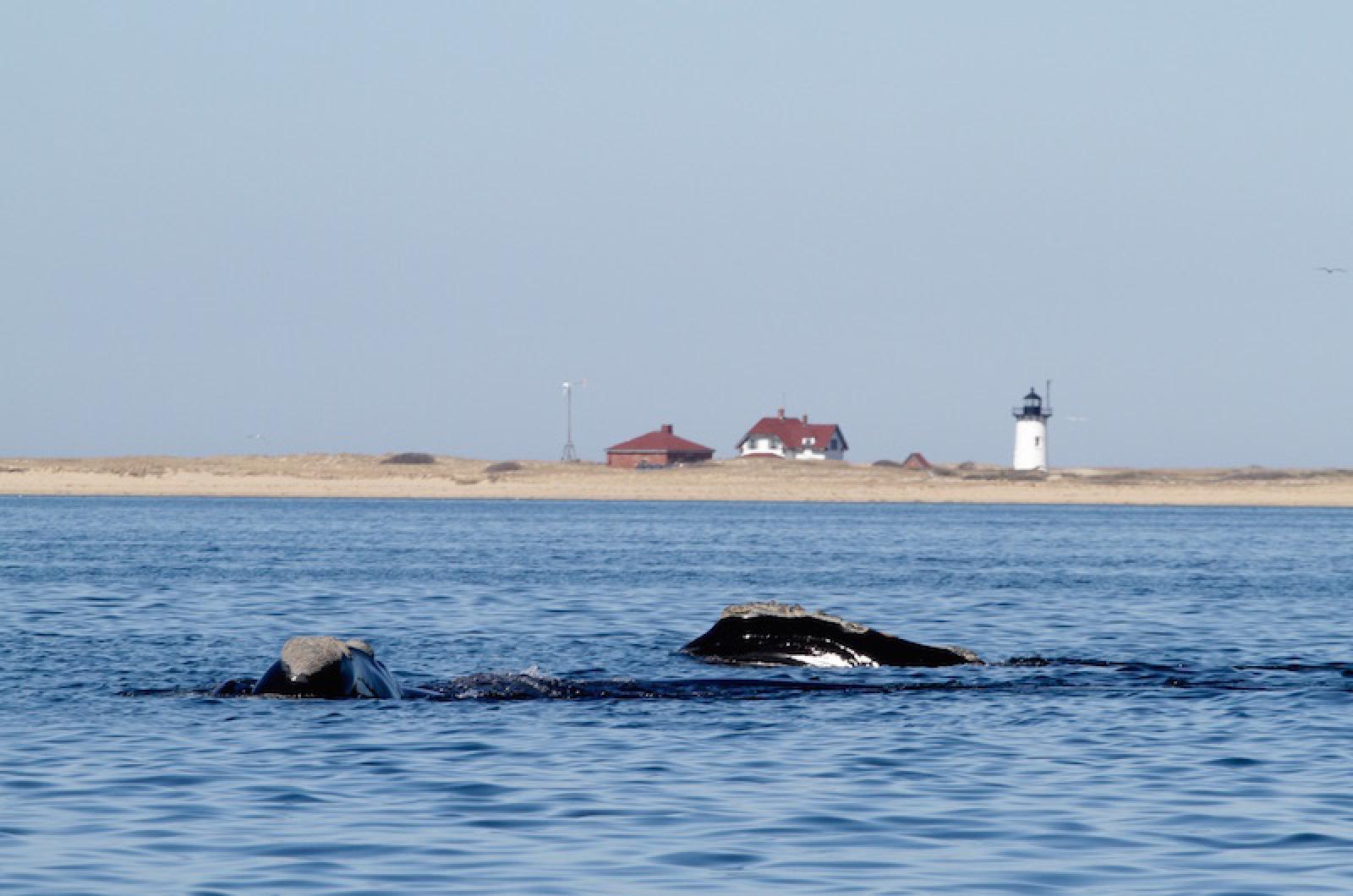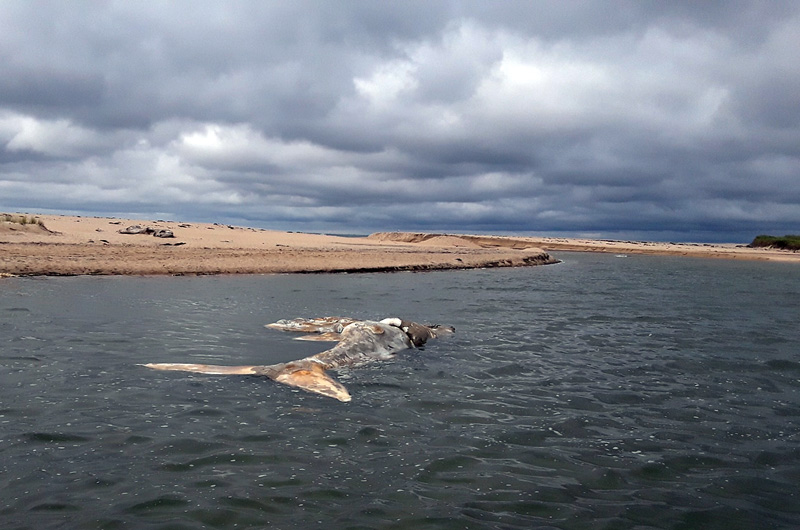NOAA Fisheries announced Friday that the deaths of 13 North Atlantic right whales in the United States and Canada this year is being considered an unusual mortality event, triggering an investigation into the cause of deaths of the critically endangered marine mammals.
“Thirteen animals is a lot of animals when you’re talking about a population of less than 500,” NOAA Northeast Fisheries protected species branch chief Sean Hayes said during a conference call with reporters Friday morning. Estimates place the current right whale population at between 450 and 500 animals. “It’s anywhere from two to three per cent of the entire population . . . it’s happened in such a truncated period. That is obviously an additional concern,” he said.
One of the dead whales was found in the Edgartown Great Pond two weeks ago.
An unusual mortality event is declared when there is a significant and unexplained die-off in a marine mammal population that demands an immediate response. Officials said Friday that the right whale deaths met four of seven criteria for a declaration.
The next step is an investigation led by NOAA and Fisheries and Oceans Canada, the results of which will guide future steps toward protecting the animals.
Officials said Friday that 10 right whales have been found dead or stranded in the Gulf of St. Lawrence in Canada since June 7, along with two whales found in the United States — the one found on the Vineyard and a right whale found dead about 160 miles offshore.
A dead right whale was also found this spring in Cape Cod Bay. The deaths so far in 2017 are well above the yearly average of 3.8 deaths in the United States and Canada combined.
Four right whales have been found entangled in fishing gear as well; two were successfully disentangled.
Earlier this year an unusual mortality event was declared for humpback whales in the Atlantic after an increased number of whales were found dead the last two years between Maine and North Carolina. The humpback whale deaths are still under investigation. The area where those whales have died partially overlaps where right whale deaths are taking place.
The recent North Atlantic right whale deaths add to existing concerns about the species, which is one of the most critically endangered large whales in the world. In recent years scientists have also documented a low rate of calves being born.
Mr. Hayes, the protected species branch chief, told reporters Friday there is concern that the population is dominated by males, with less than 200 females in the population.
Right whales spend the winter in warmer southern waters before migrating north to feed on plankton in the North Atlantic.
“The North Atlantic right whale recovery is fragile,” Dave Gouveia, protected species monitoring branch chief for NOAA fisheries greater Atlantic region, said during the media call. He said right whales are the agency’s most difficult conservation challenge. “Numbers are low and recovery slow...even small changes in productivity and survivability have a greater effect than in a recovered population.”
Mr. Gouveia noted that the whales live in an area with continuous commercial activity, and ship strikes and fishing gear entanglements are common.
A team of scientists will look at data about the whales collected by an investigative team, including results from necropsy examinations when possible. That information will be assessed along with information about the environment, habitat use, prey, fisheries and other factors.
NOAA fisheries office marine mammal health and stranding program coordinator Teri Rowles said the investigation will also look at where the deaths actually took place. “The place in which a carcass is reported is not necessarily the place where the animals died,” she said. “Drift models are really important to understand where the injury or mortality occurred.”
A report on the whale deaths is months away, scientists said, though individual necropsy findings could take a few weeks or months. Vessel speed restrictions are already in place, and right whales are listed as endangered on the state and federal level and protected by the Marine Mammal Protection Act. The investigation will dictate whether there are any gaps in ocean management or other steps that can be taken to help the endangered species.
“As far as what we’ve seen, the primary concerns and the primary threats for the North Atlantic right whale continues to be shipping and vessel strikes and fishing gear entanglements,” Matthew Hardy, aquatic resources management division manager for Fisheries and Ocean Canada said. “Not to say we haven’t been looking at other factors and contributing factors.”
Any further right whale strandings or entanglements will continue to be closely monitored, scientists said Friday, and environmental conditions will be assessed.
Mr. Gouveia said members of the public should not approach or touch stranded whales, but instead report them to NOAA officials. The Greater Atlantic marine mammal hotline is 866-755-6622.








Comments
Comment policy »